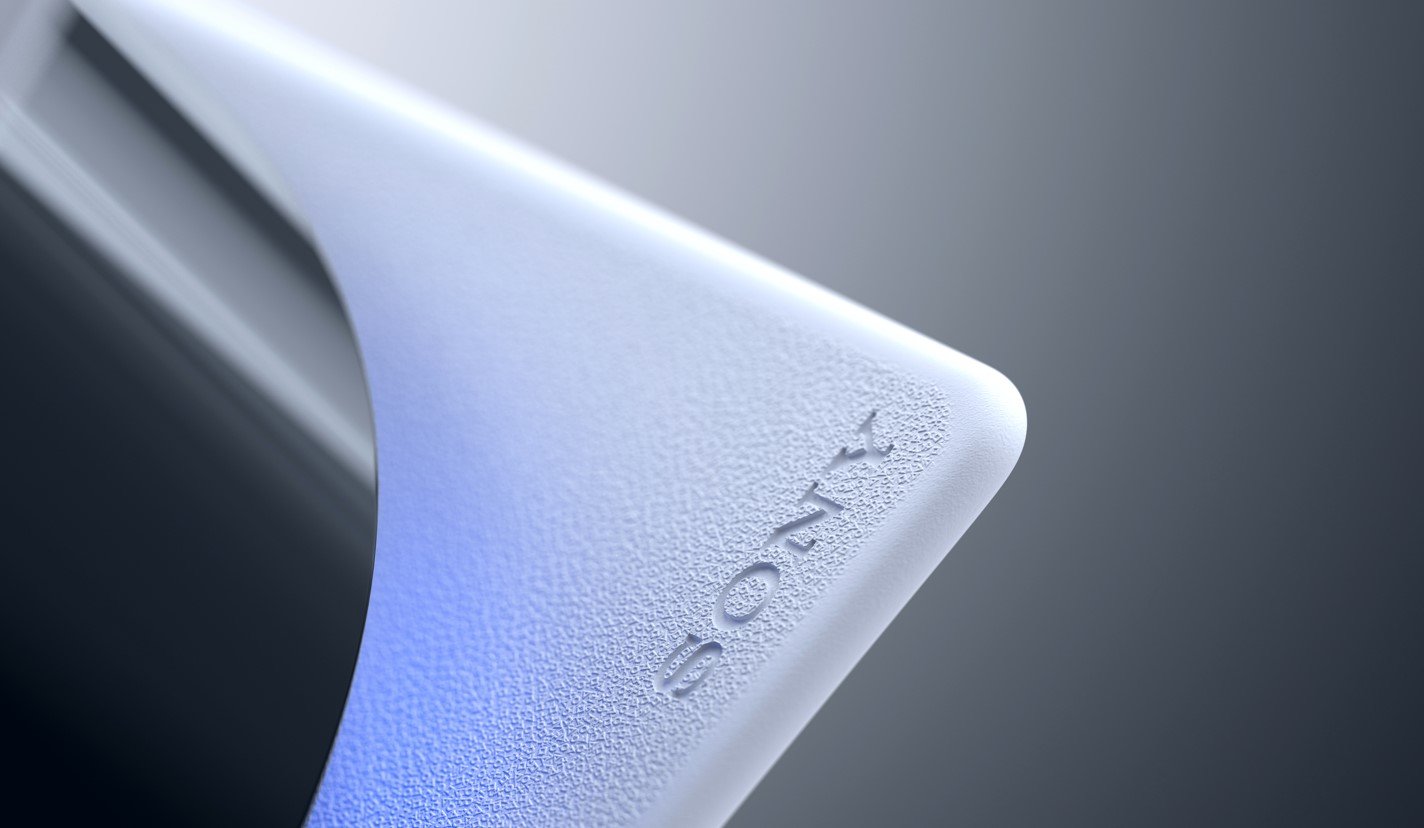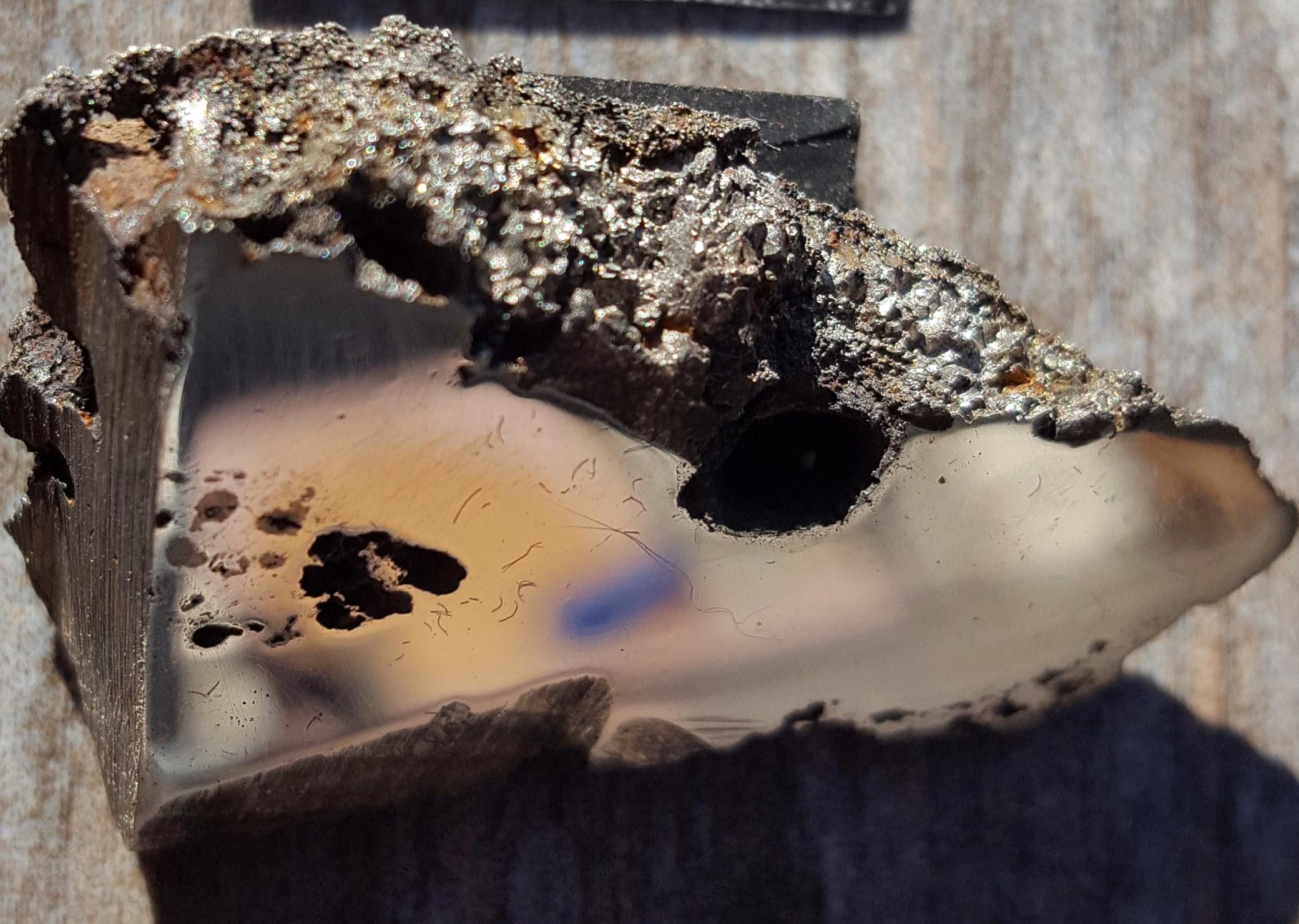
يحتوي جزء من نيزك El Ali ، الموجود الآن في مجموعة نيزك جامعة ألبرتا ، على معدنين لم يسبق له مثيل على الأرض. الائتمان: جامعة ألبرتا
قد تكشف المعادن الجديدة المكتشفة في نيزك ضخم عن أدلة على تكوين الكويكبات
اكتشف فريق من الباحثين معدنين جديدين على الأقل لم يسبق لهما مثيل على الأرض في نيزك زنة 33000 رطل (15000 كجم) اكتشف في الصومال في عام 2020. هذا النيزك العملاق هو تاسع أكبر نيزك تم اكتشافه على الإطلاق.
يقول كريس هيرد ، الأستاذ والقيم في قسم علوم الأرض والغلاف الجوي بالجامعة: “كلما اكتشفت معدنًا جديدًا ، كانت الظروف الجيولوجية الفعلية ، كيمياء الصخور ، مختلفة عما تم اكتشافه من قبل”. مجموعة نيزك ألبرتا. “هذا ما يجعل الأمر مثيرًا للغاية: هذا النيزك بالذات يحتوي على معدنين موصوفين رسميًا على أنهما جديدان في العلم.”
تم تصنيف قطعة 70 جرامًا من النيزك إلى جامعة ألبرتا ، حيث تم العثور على معدنين. يبدو أن هناك بالفعل معدن ثالث قيد الدراسة. يلاحظ هيرد أنه إذا حصل الباحثون على المزيد من العينات من النيزك الضخم ، فهناك فرصة لاكتشاف المزيد من المعادن.
تم تسمية المعدنين المكتشفين حديثًا باسم elalite و elchistantonite. الاسم الأول ، elalite ، يأتي من حجر النيزك ، والذي يُطلق عليه رسميًا “.العلينيزك لأنه عثر عليه بالقرب من بلدة العلي في منطقة حيران الصومالية. عين القطيع المعدن الثاني من نوع elkhistandonite بعد الباحث الرئيسي Lindy Elkins-Danton ، نائب رئيس ASU Interplanetary Initiative وأستاذ في كلية دراسات الأرض والفضاء بجامعة ولاية أريزونا.[{” attribute=””>NASA’s upcoming Psyche mission.

A slice of the El Ali meteorite contains two minerals never before seen on Earth. Credit: University of Alberta
“Lindy has done a lot of work on how the cores of planets form, how these iron-nickel cores form, and the closest analogue we have are iron meteorites. So it made sense to name a mineral after her and recognize her contributions to science,” Herd explains.
In collaboration with researchers at the University of California, Los Angeles (UCLA) and the California Institute of Technology (Caltech), Herd classified the El Ali meteorite as an “Iron, IAB complex” meteorite, one of over 350 in that particular category.
As Herd was analyzing the meteorite to classify it, he saw something that caught his attention. He brought in the expertise of Andrew Locock, head of the University of Alberta’s Electron Microprobe Laboratory, who has been involved in other new mineral descriptions including Heamanite-(Ce).
“The very first day he did some analyses, he said, ‘You’ve got at least two new minerals in there,’” says Herd. “That was phenomenal. Most of the time it takes a lot more work than that to say there’s a new mineral.”
Locock’s rapid identification was possible because the two minerals had been synthetically created before, so he was able to match the composition of the newly discovered natural minerals with their human-made counterparts.
Scientists are still examining the minerals in detail to determine what they can tell us about the conditions in the meteorite when it formed.
“That’s my expertise — how you tease out the geologic processes and the geologic history of the asteroid this rock was once part of,” says Herd. “I never thought I’d be involved in describing brand new minerals just by virtue of working on a meteorite.”
Herd also notes that any new mineral discoveries could possibly yield exciting new uses down the line.
“Whenever there’s a new material that’s known, material scientists are interested too because of the potential uses in a wide range of things in society.”
While the future of the meteorite remains uncertain, Herd says the researchers have received news that it appears to have been moved to China in search of a potential buyer. It remains to be seen whether additional samples will be available for scientific purposes.
Herd described the findings at the Space Exploration Symposium on November 21 at the University of Alberta’s ETLC Solarium.

“متعصب التلفزيون. مدمن الويب. مبشر السفر. رجل أعمال متمني. مستكشف هواة. كاتب.”







More Stories
خريطة جديدة للمريخ تكشف عن “هياكل” مخفية تحت سطح المريخ
زوج من نفاثات البلازما الضخمة تندلع من ثقب أسود هائل | الثقوب السوداء
الأسمنت المستوحى من عظام الإنسان أصعب بخمس مرات من الخرسانة العادية